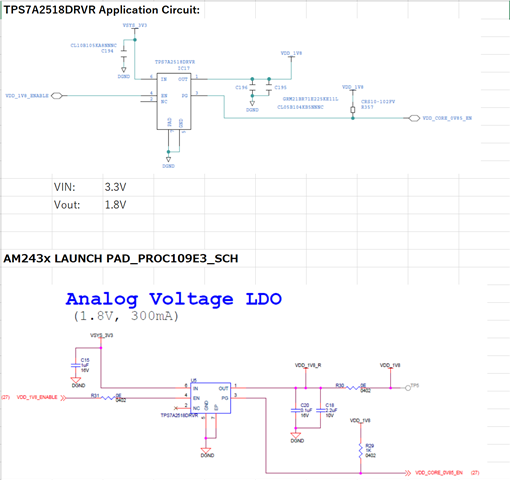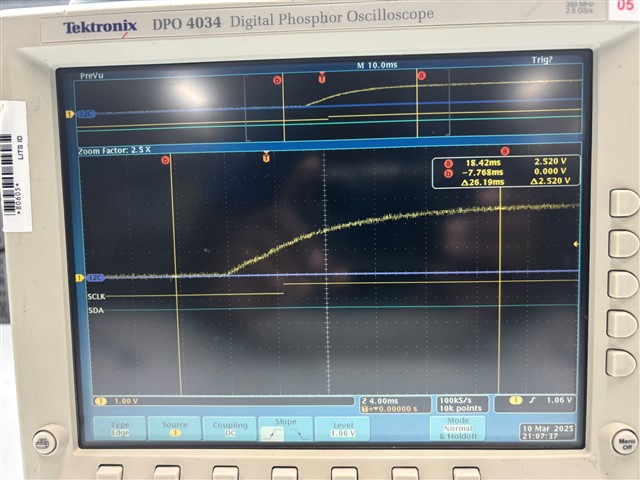Other Parts Discussed in Thread: AM2432, , TPS62822
Tool/software:
Dear Team,
My customer is evaluating the TPS7A2518DRVR for powering the AM2432. Their TPS7A2518 application circuit is based on the AM243x LAUNCH PAD_PROC109E3_SCH. When they measured the TPS7A2518 OUT voltage at startup, it had ~2.5V overshoot at OUT which is higher than the maximum absolute ratings of the AM2432. They also measured the TPS7A2518 OUT voltage at startup on the AM243x LAUNCH PAD, it had the same overshoot.
They tried adding a 12k ohm resistor between OUT and GND in parallel with Cout, but it did not have the effect of reducing overshoot.
The TPS7A25 seems to have "8.3.7 Active Overshoot Pulldown Circuitry", but it is not effective.
Are there any measures to reduce the OUT overshoot?
Best Regards,
Koshi Ninomiya



